Models Of The Communication Process |
Classic Models of the Communication Process:
Aristotle's Model (according to Berlo):
 |
| For another perspective on Aristotle's implicit model of the communication process, see http://faculty.juniata.edu/cockett/teaching/130/models/aristotle.html |
Bell's Drawing:
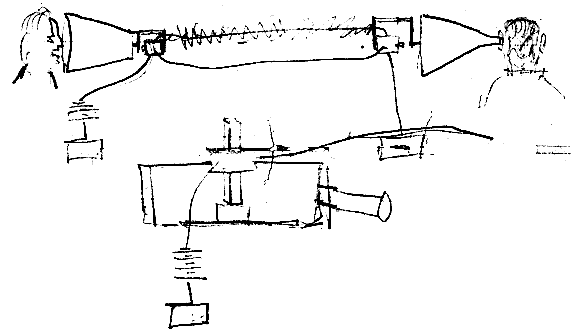 |
| This model is discussed in http://davis.foulger.info/research/unifiedModelOfCommunication.htm |
Saussure's Model:
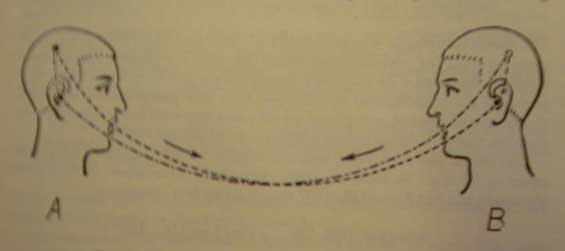 |
| See also http://www.uni-kassel.de/fb8/misc/lfb/html/text/6-1.html and http://coral.lili.uni-bielefeld.de/Classes/Summer96/Textdesc/funslides/node2.html |
Shannon's Model (according to Berlo):
 |
Shannon’s Model:
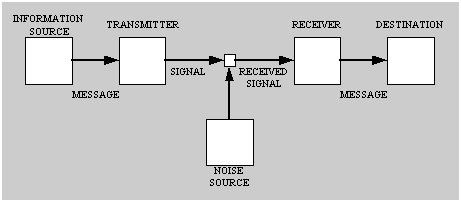 |
| Originally discussed in Shannon's classic paper at http://cm.bell-labs.com/cm/ms/what/shannonday/paper.html |
| Critiqued nicely at http://www.aber.ac.uk/media/Documents/short/trans.html |
| Discussed in more detail at http://davis.foulger.info/research/unifiedModelOfCommunication.htm |
A Storage Model:
 |
An Intermediary or Gatekeeper Model:
 |
| Katz and Lazarsfeld’s Two Step Flow extend this model. See http://faculty.juniata.edu/cockett/teaching/130/models/katz.html |
An Interactive Model:
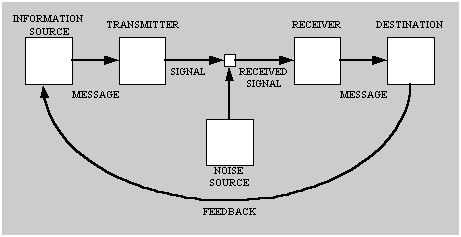 |
| Discussed in more detail at http://davis.foulger.info/research/unifiedModelOfCommunication.htm. |
A Transactional Model:
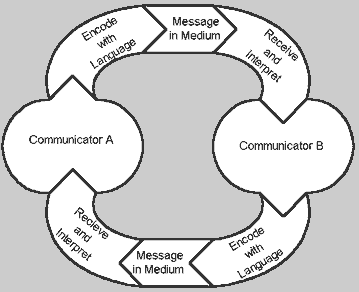 |
| This model has its roots in Schraam and Osborn's Circular Model. It is extended in interesting ways by Dance's Model (see http://faculty.juniata.edu/cockett/teaching/130/models/dance.html) and the time series model of Watzlawick, Beavin & Jackson (see http://faculty.juniata.edu/cockett/teaching/130/models/watzlawick.html). |
| Discussed in more detail at http://davis.foulger.info/research/unifiedModelOfCommunication.htm |
See also:
- http://www.slis.wisc.edu/academic/syllabi/450/communication/
- http://www.uni-kassel.de/fb8/misc/lfb/html/text/6.html
- http://www.cultsock.ndirect.co.uk/MUHome/cshtml/
- http://web.sfc.keio.ac.jp/~masanao/Mosaic_data/com_model.html
- http://web.umr.edu/~gdoty/classes/concepts-practices/models.html
- http://faculty.juniata.edu/cockett/teaching/130/modelsmain.html
- http://www.teleometrics.com/info/resources_johari.html
Models of Communication forwarded by Davis Foulger
An Ecological Model of Communication:
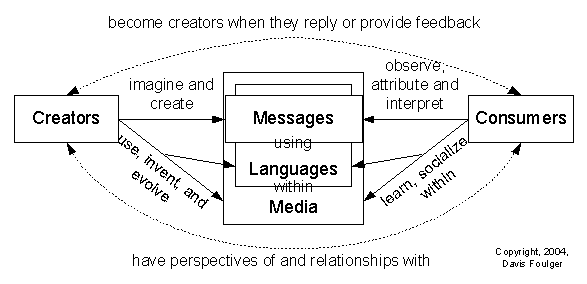 |
| Introduced near the end of http://davis.foulger.info/research/unifiedModelOfCommunication.htm. Extended into an axiomatic model in http://davis.foulger.info/papers/ecologicalModelOfCommunication.htm. |
Its predecessor, referred to as a unified model of communication:
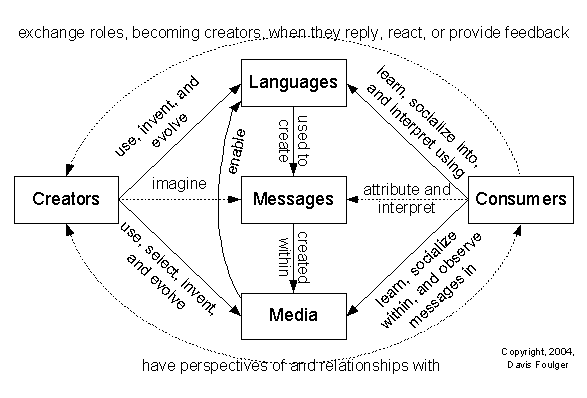 |
| Introduced with minimal discussion at the end of http://evolutionarymedia.com/papers/hammerAsMedium.htm |
Spheres of Invention in Media:
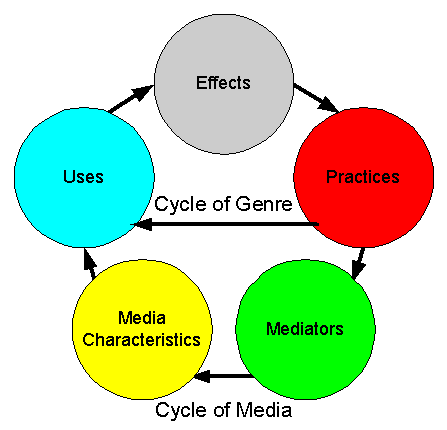 |
| Discussed in http://evolutionarymedia.com/papers/hammerAsMedium.htm and http://davis.foulger.info/papers/spheresOfInventionDesignPattern.htm |
DavisOtherModelsOfTheCommunicationProcess
In this topic "THE MODEL OF COMMUNICATION BY LIGANS" should be added because that model is more useful and new then these all.
- I presume you are referring to "ligands" and to models of biochemical interaction at cell boundaries, which is described in at least one recent article http://www.cell.com/biophysj/abstract/S0006-3495(03)75093-0 ) as an intercelluar communication process involving ligands. I won't say this isn't interesting (it is), but it is hardly a general model of the communication process and it isn't newer than the most recent models overviewed here. - DavisFoulger
| -- Last edited September 26, 2009 Go to Main Topic list |
Foulger, D. and other participants. (September 26, 2009). Models Of The Communication Process. MediaSpaceWiki. Retrieved on from http://evolutionarymedia.com/wiki.htm?ModelsOfTheCommunicationProcess.
No comments:
Post a Comment